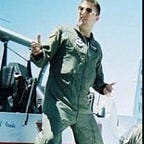What I’m reading…
Military Strategy: A General Theory of Power Control
by J.C. Wylie
Wylie came to be interested in abstract theory gradually, through experience and observation during his naval career. Wylie’s book, Military Strategy: A General Theory of Power Control, was clearly a product of his experience and his professional development as a naval officer. Looking back over his career, one can find in it the ideas and thought processes that led him to write the book.
The Development of Naval Thought
by Herbert Rosinski
Rear Admiral Henry E. Eccles, USN, then recently retired after 30 years of active service, became acquainted with the late Herbert Rosinski, who frequently visited the Naval War College and the Eccles’ home in Newport. Admiral Eccles recognized that Rosinski was a scholar par excellence who had an encyclopedic knowledge of military and naval history. He also had a depth of understanding and a breadth of vision which could have resulted in his contributions to scholarship being comparable to those of Alfred Thayer Mahan or Sir Julian Corbett. Unfortunately, Rosinski attempted too much and in doing so he never completed his magnum opus. Neverthless, Admiral Eccles cast himself in the role of a student and he set about deliberately to learn as much as he could from this remarkable man. Rosinski ‘s ideas significantly influenced much of Eccles’ own thinking, which culminated in Eccles’ book, Military Concepts and Philosophy.
The Command of the Air by Giulio Douhet, translated by Dino Ferrari
The Italian General Giulio Douhet reigns as one of the twentieth century’s foremost strategic air power theorists. As such scholars as Raymond Flugel have pointed out, his theories were crucial at a pivotal pre-World War II Army Air Force institution, the Air Corps Tactical School.
Military Innovation in the Interwar Period
edited by Williamson Murray and Allan Millett
This study of major military innovations in the 1920s and 1930s explores differences in innovating exploitation by the seven major military powers. This volume of comparative essays investigates how and why innovation occurred or did not occur, and explains much of the strategic and operative performance of the Axis and Allies in World War II.
Combined Arms Warfare in the Twentieth Century
by Jonathan M. House
For centuries, the world has witnessed the development and use of increasingly complex and powerful military systems and technologies. In the process, the “art of war” has truly become the art of combined arms warfare, in which infantry, artillery, air support, intelligence, and other key elements are all coordinated for maximum effect. Nowhere has this trend been more visible than in the history of twentieth-century warfare.Originally published as an essential “in-house” study for U.S. Army officers during the 1980s, this much revised and expanded edition remains the most complete study available on the subject. Rewritten with a much wider readership in mind, it both retains its enormous practical utility for military professionals and provides a valuable and appealing introduction for scholars and general readers.
To Win the Winter Sky: Air War over the Ardennes, 1944-1945
by Danny Parker
As Allied and German armies fought on the ground in the Battle of the Bulge, an equally desperate battle raged in the skies overhead, as enemy air forces fought the weather and each other for supremacy.
Author Danny Parker completes the narrative begun in his Battle of the Bulge. He covers the important and previously unexplored air aspect of a famous land battle. Through all the facts and figures, Danny Parker weaves a compelling narrative about the airmen on both sides in the last desperate days of World War II, about their conflicts with the enemy and among themselves as they stood on the brink of victory — and defeat. As the end of the war drew near, Allied leaders were divided between British and Americans, air and ground commanders, and advocates of strategic and tactical air operations. On the German side, Luftwaffe leaders Hermann Göring and Dietrich Peltz sought to obey every order to the bitter end, while Luftwaffe fighter commander Adolf Galland struggled to save his last reserves of young pilots from a final and futile slaughter.
